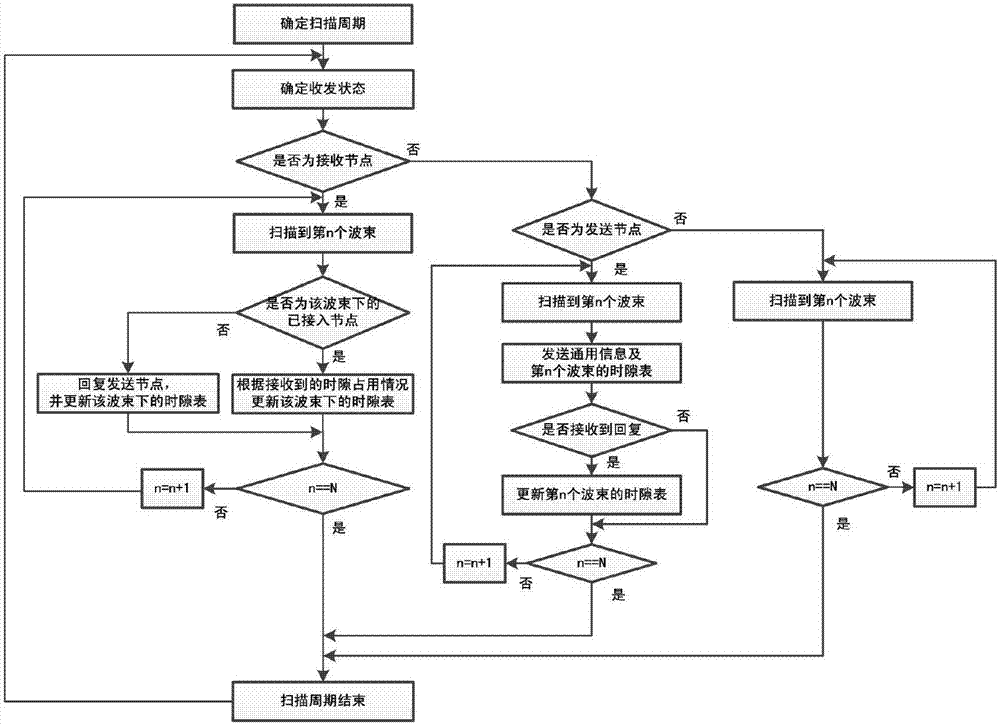Directional center-less ad-hoc network neighbor discovery method for reducing collision probability
A technology of neighbor discovery and collision probability, applied in network planning, network topology, wireless communication, etc., can solve problems such as spatial mutual interference, difficulty in normal node access, collision, etc., to improve work efficiency, improve discovery efficiency, and reduce collisions The effect of probability
- Summary
- Abstract
- Description
- Claims
- Application Information
AI Technical Summary
Problems solved by technology
Method used
Image
Examples
Embodiment Construction
[0023] refer to figure 1 , the present invention is combined with actual equipment, and each equipment is equipped with multi-faceted directional antennas, and the omnidirectional coverage of the network guaranteed by switching is adopted. The neighbor node discovery of the directional non-center ad hoc network is realized according to the following steps:
[0024] (1) The node determines the beam direction number N of the antenna according to the number of directional antenna switches, and numbers each beam direction, and takes N beam directions as a scanning cycle; N is a natural number greater than 1;
[0025] (2) The node starts to perform beam scanning, and randomly determines its own transmitting and receiving status in each beam direction under the current beam scanning period, and the described transmitting and receiving status includes sending status, receiving status and silent status;
[0026] (3) The node determines the current scanning beam direction and the node'...
PUM
 Login to View More
Login to View More Abstract
Description
Claims
Application Information
 Login to View More
Login to View More - R&D
- Intellectual Property
- Life Sciences
- Materials
- Tech Scout
- Unparalleled Data Quality
- Higher Quality Content
- 60% Fewer Hallucinations
Browse by: Latest US Patents, China's latest patents, Technical Efficacy Thesaurus, Application Domain, Technology Topic, Popular Technical Reports.
© 2025 PatSnap. All rights reserved.Legal|Privacy policy|Modern Slavery Act Transparency Statement|Sitemap|About US| Contact US: help@patsnap.com

